We are lucky to see true Classical Masters in our own lifetime, let alone study with them firsthand. Thankfully there are bits and pieces of information passed along which continues to help us understand their motivations, their practices and methods; some from their own writing and much more from the writing of their students.
Bettina Drummond was interviewed for a piece at Eclectic Horseman, so much of which I feel is a valuable insight into a Master so recently passed and yet still being no more clear to us than many of the Masters to have gone before him.
Some of my favorite points –
Question: Why hasn't there been another “Mr. Oliveira”?
Answer: We have seen riders of equal ability and stature but he was the first to take the classical French root and graft it successfully with the Baucherism in this century. General L'Hotte put both methods together in the 19th century. But nobody has any pictures or videos and as the head of Samur, he didn't have the mission of disseminating Baucherism. Also, very few riders have the classical French formation, and the ones that do, because of their rigid mind set that the classical formation puts in, do not tend to dabble in Baucherism. Mr. Oliveira had the classical French formation and the open-mindedness to combine it with Baucher. That combination, along with his innate riding abilities, is something that happens very rarely. He is the only purely Latin trained rider that went off seriously into Baucherism fully committed to it and had the exactitude and knowledge of the classical training to back it up.
The French have also branched off in the 20th century to different breeds of horses, the Selle Francais and the Thoroughbred. Baucher created his style around the influx of Thoroughbreds used for racing. The French have also branched off in the 20th century, emphasizing the sport and the Cavalry. Therefore, the French adapted the classical French formation to the needs of the breeds and style of riding prevalently in fashion. Latins need a horse to come back on the haunches for bull fighting, The Iberic riders still ride in the classical balance because they continue to breed for it. In America there are very few Iberic horses. Few people ever feel classical training horse on a classically bred horse. There is a different feel to a horse that has that haunch equilibrium. I think the Lippizaners have it but the Lippizaners don't have the suppleness and the roundness of the front end comparable to that of the Iberic horse. There again there is a different quality in the different breeds. If you ride a Lippizaner classically you are going to ride in a more Germanic style than French style.
For many it seems that Baucherism is a dirty word. Baucherism has been the flag flown by those using Rollkur to excuse their behavior as being strictly Classical, some seem to believe it is all about being in the horse's face with an over-emphasis on flexions. Whatever your feelings of Baucherism surely we must also remember that no one style was ever perfect for every horse, or repeatable by every rider.
Question: How was Mr. Oliveira's system so different?
Answer: Mr. Oliveira was particularly open minded for a Latin. He was completely focused in his use of the classical Latin Portuguese school in his youth and he was the first one to dabble in Baucherism. He thought it was a great idea. People where shocked, even in the French school. He had a certain vision of riding. I think anyone who has a vision as an end result is going to be more open-minded at bringing in different systems. Juan, Mr. Oliveira's son said something wonderful one day; “There is no Mr. Oliveira System, there is only Mr. Oliveira.” And it is true; it is a great quote because his system is that he was able to understand and accept that each horse will need something different, different types of training at times, and he was able to stay fluid throughout the whole training of the horse. He went from only training Iberic horses in an Iberic manner to a completely different way of thinking about horses. All he would say to me was, “pick the right moment and do what has to be done to break the contractions.”
I saw the progression in his riding and his personality as a teacher when he got a sudden influx of exposure to riders and spoke with them. He would always go back to forming the horses in roundness and suspension particularly in the piaffer and passage. He was incredibly good at that. And he always listened to opera. He evolved not a system but a technique later on in life and like a good wine, he matured. Toward the end of his life he went much more completely into a Baucherist system, because he told me “now I want to be focused only on that.” I asked, “why are you doing this, only this?” particularly since I did not like the way the horses' backs looked at that point. He said, “I am tired. I am at the end of my career. I have ridden all of these horses. I want to explore how high I can send a horse's hock.” That is when I saw a horse passage and hit his belly with his hind leg. It was little Swant, a tiny little horse with a weak back end who managed to hit his belly three times in a row in passage with the back of his pastern. I have never seen anybody do that with any breed, particularly with a weak horse. But it was an exaggeration because all of a sudden Mr. Oliveira's focus was completely tight on that. He would not let go. He was like a dog on a bone when he was working on an idea. At the same time when he was training through sequential training, i.e., when he had to form a horse in two years, he would say “OK today we will do this.” If he was having a resistance he would go in his bathroom at 4:00 a.m. and meditate on how to fix it, then come back and use a particular technique. Then if he needed to read, you would see him with a book, often at the end of the night.
This begs to ask the question – is a Master one who only ever works to develop the horse thoroughly in all ways, or can he also be like a true artist who focuses on the development of a very narrow portion of their work for a time?
http://www.youtube.com/watch?v=N3MX1rgd04c
Question: So he did do a lot of studying and reading?
Answer: Absolutely. When it finally dawned on me that it wasn't just up-down, up-down I started reading a bit. Once I was quizzed in the United States if I had read Steinbrecht. I thought “German, how could I possibly read a German.” I thought I would be contaminated reading a German book. Then when I went to Mr. Oliveira, I said “What you just did to disengage the horse forward in the shoulders was Steinbrecht.” And he said “Of course.” He quoted me the page number in the book. And I said, “Wait a minute, you are training me in the French system; what is this German stuff coming in?” I had this concern that I was going to start pulling on the reins and cranking on the horse's mouth if I do anything German. He looked at me as if I had completely lost my mind. And he said, “Steinbrecht is just Baucher on the other side of the Rhine. It is just put on a different muscle structure and a different equilibrium on a horse.”
For a time I clung to the idea that French = good and German = bad in the Classical sense, but that was very early in my schooling. When you know enough to start asking questions inevitably you start asking the ones that lead to opening your mind about all avenues – not just those you assume to be right and those you assume to be wrong. I'm still concerned with any that expose the horse to exploitation, but if you never look you won't be able to see the truth of it.
Question: Did he brace his back?
Answer: Mr. Oliveira's back was never braced. The one thing he always said to me was, “Never brace against the horse. ” He would go into the motion of the horse and redirect it. His back was like a clutch. He would ride the clutch and then ease it out in whatever direction he wanted. The clutch basically always functioned. He would use the spur's approach as an emergency power brake. The release of the hands was like riding the clutch against the accelerator, with the approach of the inside leg to incurve the horse, rock it back and collect it. The release of the inside leg and the approach of the outside leg deviates the course of the haunches to dominate the horse's direction. Basically, the seat ruled the whole package and the release of the leg and hand aids expressed the package.
The seat is all important, it's a skill I work on constantly both on and off my horse. I would have loved to be able to witness in person the use of such a refined seat, though I do watch as many clips of Oliveira riding as I can find.
Question: Do you know what Mr. Oliveira was seeking?
Answer: I think like all artists, an expression of self that isn't selfish. I think because he stopped verbalizing it to himself, stopped being honest with himself, he lost the thread. He lost where he was going. But he never lost the desire to share with someone, which I find extraordinary in such a egocentric human being. He desperately wanted an audience. He wanted a private audience towards the end of his life. He wanted a really good horse and private students that would admire him. He never stopped riding, even when his body was giving out. Unfortunately, he could never become a coach. The only place to go when your body gives out is to be the teacher, the supportive coach. Why I thought he could do that for me when he couldn't do it for his own son, I don't know. But I had thought that it was going to evolve. I had to pick myself up when it didn't happen.
Aren't we all human? Even those with great riding skills…
http://www.youtube.com/watch?v=74whiII884Y
Question: Do you think he found what he was looking for?
Answer: No, I don't think so. That is why he was rather sad at the end of his life. He was a very God-fearing person. The only person who could put the fear of God in Mr. Oliveira was God himself. Mr. Oliveira sacrificed his dignity for personal pleasure. Ultimately he sacrificed everything, his relationships, for his art. Gradually as his body gave out, he came around. He said that the only important thing in his life was his grandchildren. He wanted to make his peace with his family. That is when he told me I had no right to question what he was doing with his horses. He compromised till the end of his life for one thing, for basically his family and God, his peace with God. It was his way of saying I have had my playing.
and lastly –
Question: The horses then, did they provide the justification?
Answer: The horses were the judge certainly. That is why he said to me, “When you get off your horse it is not the people who looked at you or the judge, nor have the right to judge. It is the horse that turns around and by his supple body and kind eye that is seeing the riding I gave it, as the one tribute I take as a student.”
He was mesmerized by what fascinating creatures horses were. It was that horses had the ability to try and meet his every demand and was he demanding. He appreciated every effort the horses made and expected them to make more. It was the same with his human students and very few humans will do that. I think that is why he particularly bonded with the children because they will do that. We never questioned, we did. We followed because we realized he had a vision. He did abuse people who did not have the physical or mental ability to go that far. When he balanced his psychological demands, he was fantastic. When he didn't, it was too much.
I truly find Nuno Oliveira's work fascinating, and still very distanced – like you're intruding on a private conversation between him and his horse. I don't get that impression with many other riders, mostly they seem appropriately on display, giving orders to their horse more than having a deep discussion. Watching Nuno though you can tell he's fully committed to the conversation.
The rest of the article is very good and also talks more about Bettina's schooling and personal experiences apart from working with Nuno Oliveira.
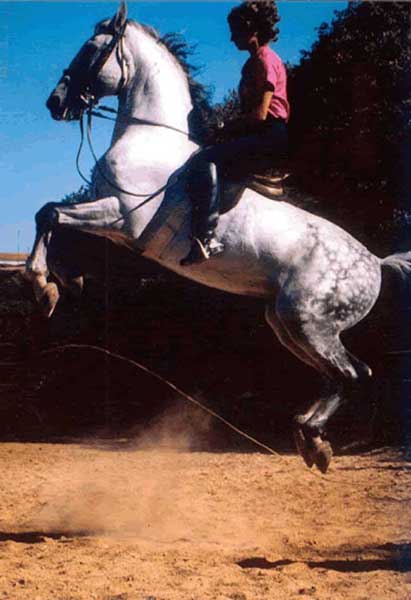
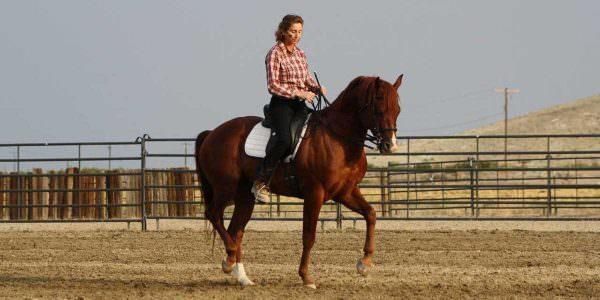

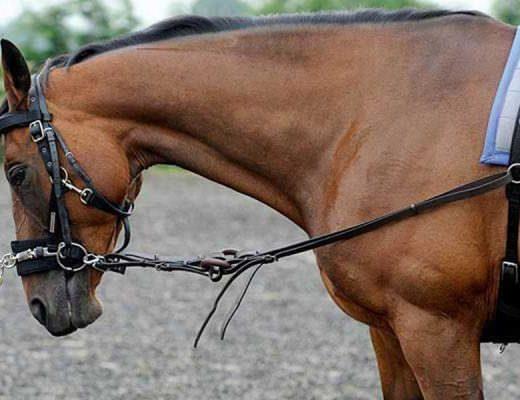
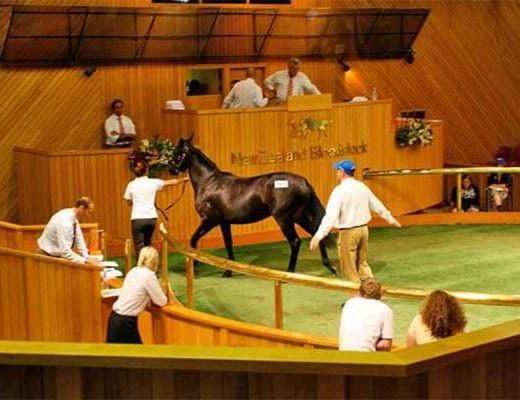
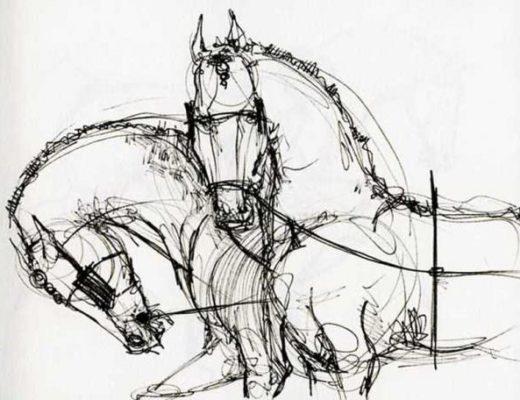
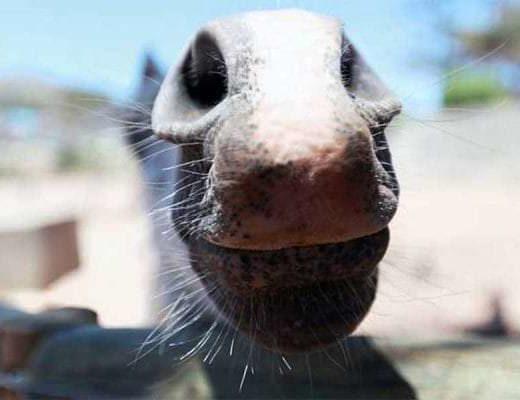
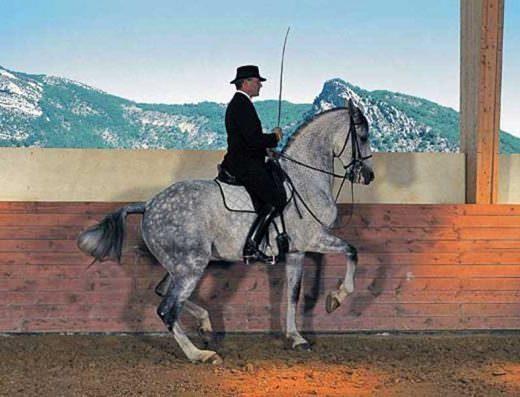
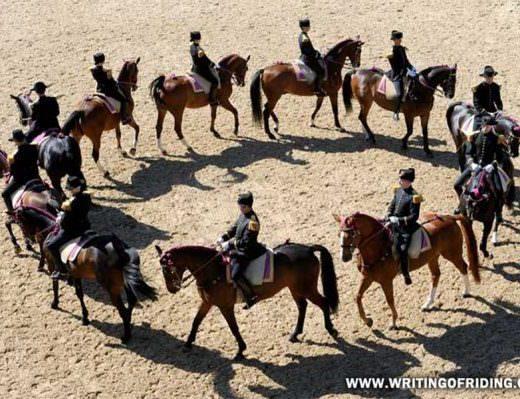
Why did he not balance his own head correctly